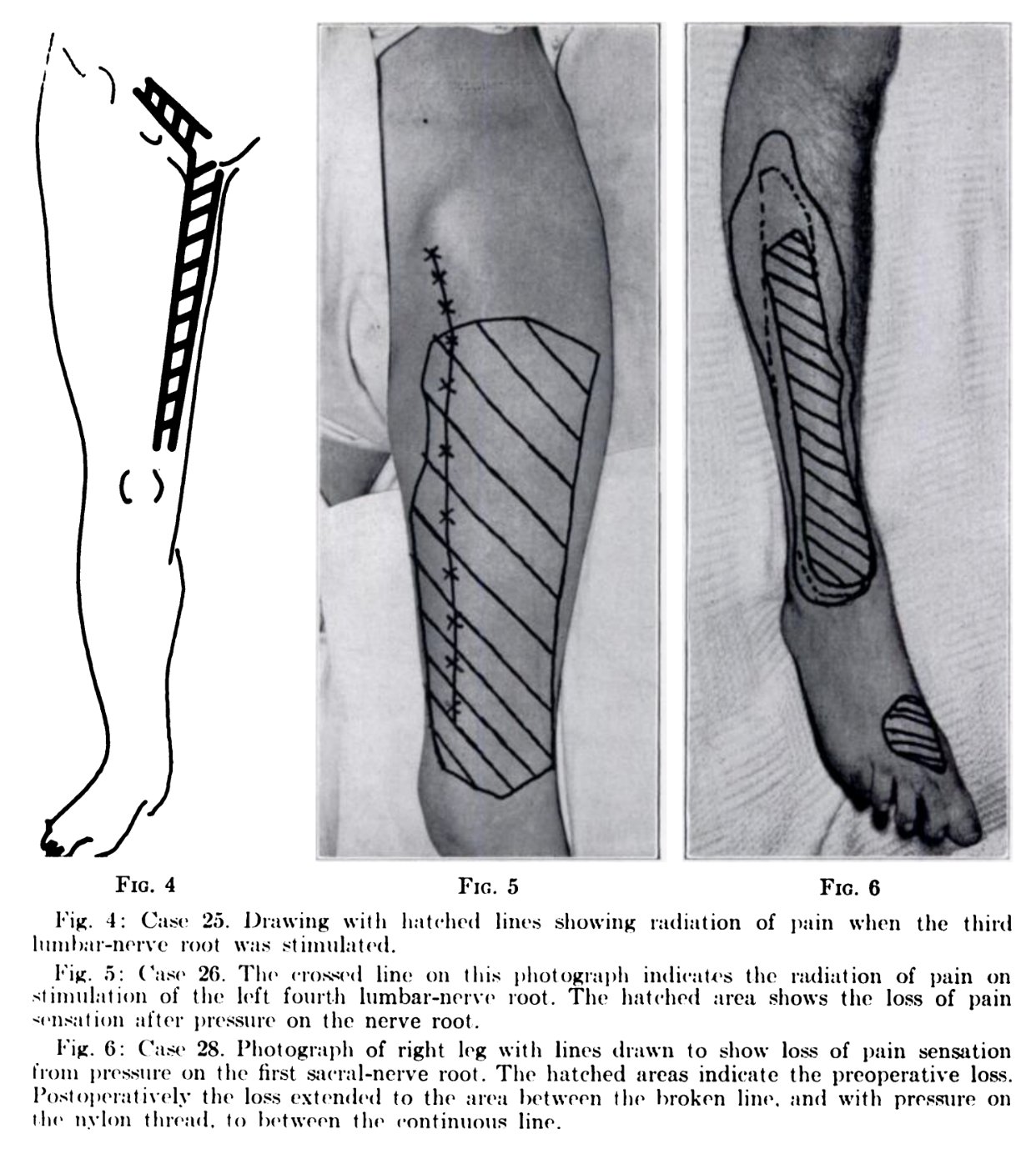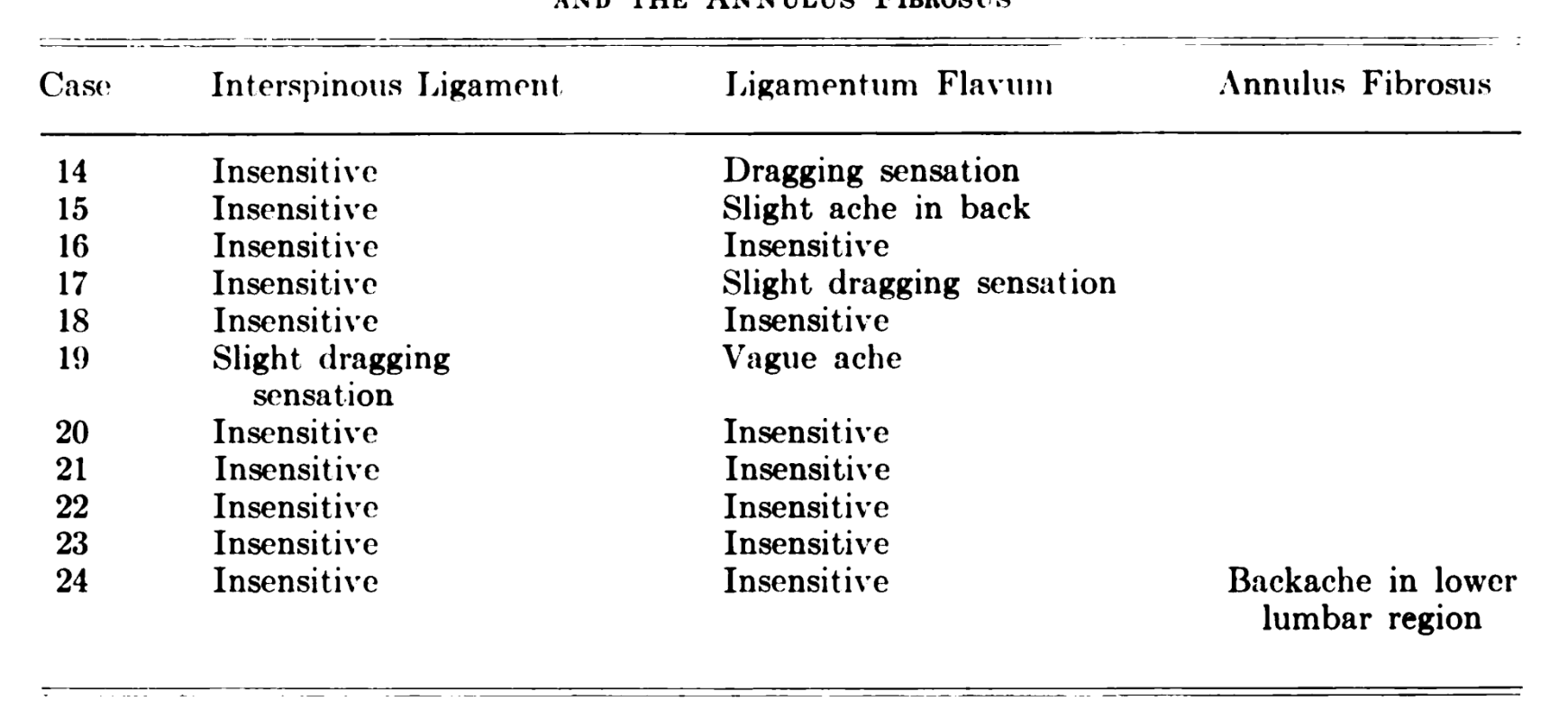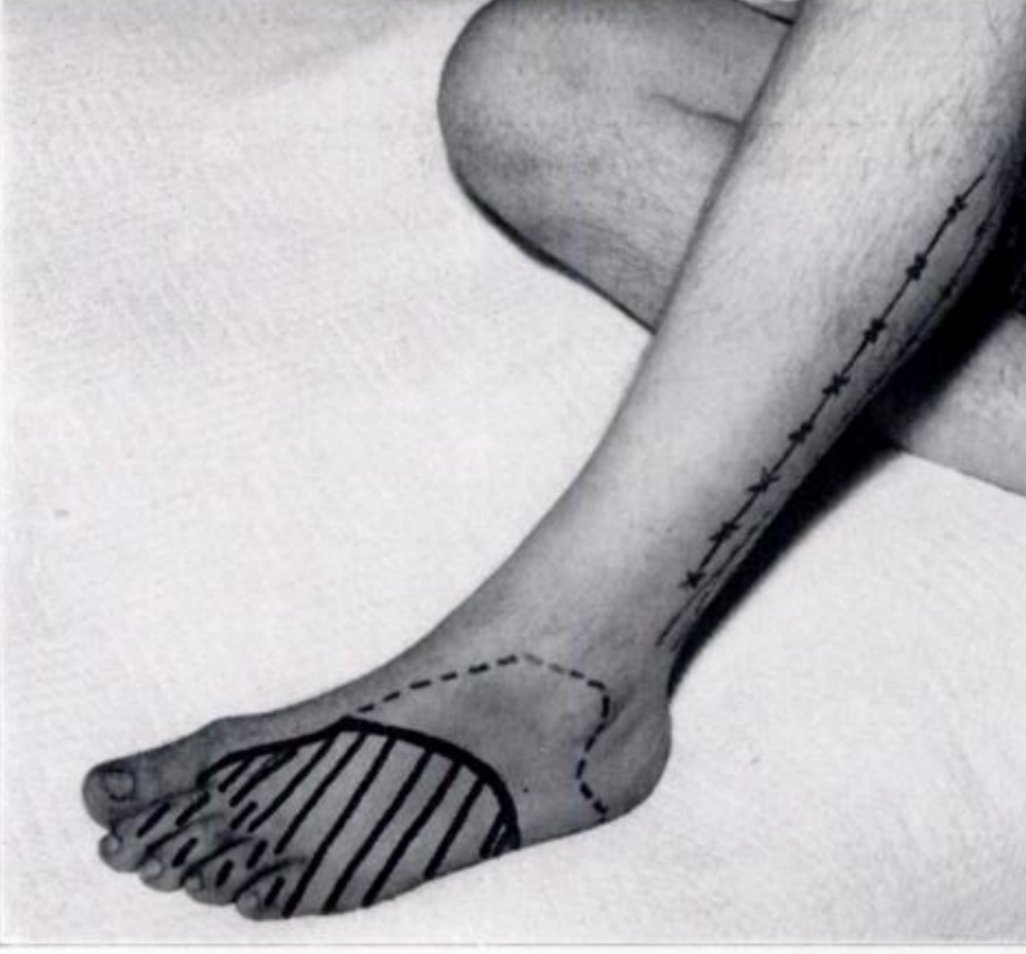*That* nylon thread study.
Here's an unforgettable study on sciatica and disc herniations, firmly in the category of "you couldn't do that these days". The study was performed in Leeds in 1958...
At the time, people knew that disc herniations can cause sciatica. But they didn’t really know how. Most people thought that it was through compression. But the authors of this paper, Doctors Smyth and Wright, had a hunch that it wasn't quite that simple.
The authors took 40 of their pts with sciatica caused by a herniated disc. As usual, they operated on these patients to remove the herniated material. Then, they took a nylon thread and looped it round the involved nerve root, bringing both ends of the thread to the surface...
...and they sewed their patients up, leaving the ends of the thread hanging out. They waited a few days for their patients' pain to resolve post-op... and then...
They pulled on the nylon thread.
Only gently, you understand. In their words, 'just a gentle pull was exerted to bring the nylon in contact with the root, causing a moderate degree of pressure'.
What happened? It reproduced the patient's sciatica perfectly:
"The effect [of a gentle pull on the thread] was immediate. The patient jumped and exclaimed that a severe pain shot into the right buttock. It disappeared at once when the nylon was relaxed. At the second attempt the thread was very slowly drawn upon until the patient could feel pain. This time it was not so intense: the thread could be barely touching the root. Then tension was increased and as it mounted severe pain spread from the center of the right buttock down the center of the back of the right thigh, veered laterally to the region of the biceps tendon, skipped the side of the knee, and was felt intensely on the lateral side of the calf. It ended about three inches above the lateral malleolus. [The pain] appeared to consist of two components: a sharp pain which ran, as if along a line, down the extremity, and a deep, boring, aching, unpleasant sensation felt diffusely in the soft tissue".
Pulling on the nylon thread also reproduced their patient's sensory changes: "After a continuous but gentle pull for a quarter of a minute, the patient volunteered the information that all of the toes and part of the dorsum of the foot, proximally, felt numb".
Their work done, Smyth and Wright pulled out the thread and closed the wound.
In the next patient, they did the same thing, and "an almost identical series of events occurred". And the same in the next pt, and the next. A gentle pull on the nylon thread around the involved nerve root brought about "a series of events similar in every way".
Smyth and Wright also noticed that a gentle pull caused proximal pain,and slowly adding pressure caused the pain to expand distally. Interesting! File under: buttock pain can be nerve root pain.
In six patients, as an addition to their experiment, the authors passed an additional loop around the neighbouring, uninjured nerve root. For example, if the involved root was S1, then they passed a loop around S1 but also L5 as well.
What happened when they pulled on the thread around the neighbouring, uninjured nerve root? It caused *some* radicular-ish pain. The distribution of this pain was very close to the pain caused by pulling on the involved nerve root. But the pain was much less severe. As Smyth and Wright put it, the injured root had become "hypersensitive" from prolonged irritation by the disc.
But how could they be sure that all this sciatica is specific to the nerve root? To test this, the authors also tied their nylon threads round other tissues, e.g. ligamentum flavum, interspinous ligament and annulus fibrosus When they pulled on the thread round these tissues there was practically no pain - or a dull ache, or a dragging sensation. Feelings that Smyth and Wright say "could scarcely be described as pain".
I told you you couldn't do all this today! But what should we make of all this? For me, a key message is: sciatica doesn't necessarily mean a nerve root is being pressed, squashed or crushed. The authors reproduced their patients' pain precisely, using just 'a gentle pull'.
On top of that, Smyth and Wright noticed that some of the herniations they removed were very small indeed, and couldn’t have been putting much, if any pressure on the injured nerve roots.
Now, thanks to research performed since this paper, we understand that inflammation, triggered by the herniation, is a *big* part of the picture in sciatica.
People with sciatica are often glad to hear this! A lot of people assume that every time they get a jolt of sciatica it’s because their nerve root is being squashed by a 'slipped disc'. It's a very mechanical picture that can't be very nice to imagine. Bend —> squash —> ouch!
However, it's quite probable that their nerve root is just very sensitive, and moving it and stretching it just hurts full stop.
Now, this isn't going to have patients dancing out the door, but many people are relieved to hear that pain with movement doesn’t necessarily mean they’re squashing the nerve root, and find it gives them the confidence to move a bit more!
That said, we have to be careful with this message because of course some people *do* have large disc herniations that mechanically squash or crush their nerve roots... It's never simple!
Here's a link to this paper, which I do recommend reading in its entirety - it's full of interesting clinical descriptions! There's also much more in our book, Understanding Sciatica.






